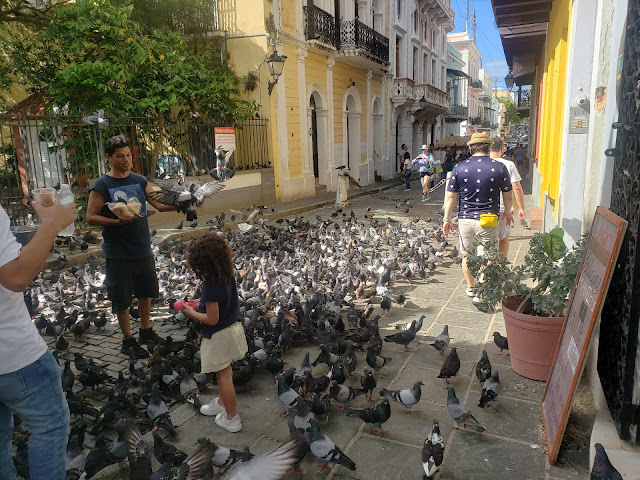My husband and I visited Old San Jan (Puerto Rico) at the end of October this year in an act of denial of the end of summer. We criscrossed the blue brick roads on foot in a color-induced daze, for San Juan is an archi-sketcher's dream city. I get a sense that the building owners of San Juan have collectively agreed that no two buildings in the town can be painted quite the same color, but all of the colors should be plausible options for fruit-flavored cereal pieces.
The overall effect is simultaneously ancient, yet tropical. In the sketch, these buildings could belong to a street in a small town in Spain or Italy, but the colored version places them in Puerto Rico, at least for me.
Buildings reveal so much about a community. Given the history of hurricanes, the choice of bright colors for nearly everything in Puerto Rico, so vulnerable to wear and weather, strikes me as optimistic.
Old San Juan has preserved its historic layout well. Given the narrowness and brick-ness of the streets, the cars that dare to traverse San Juan include a tiny and respectful crew of Ubers dropping people outside their hotels, then getting the heck out, as there is a $500 fine for parking in the streets.
As a result, pigeons abound, as do feral cats (somehow without noticeable conflict).
Life flows seamlessly between the indoors and outdoors due to the blissful weather. The cats choose sunny spots for basking and hiding places during the 15-minute rain spurts.









Comments
Post a Comment